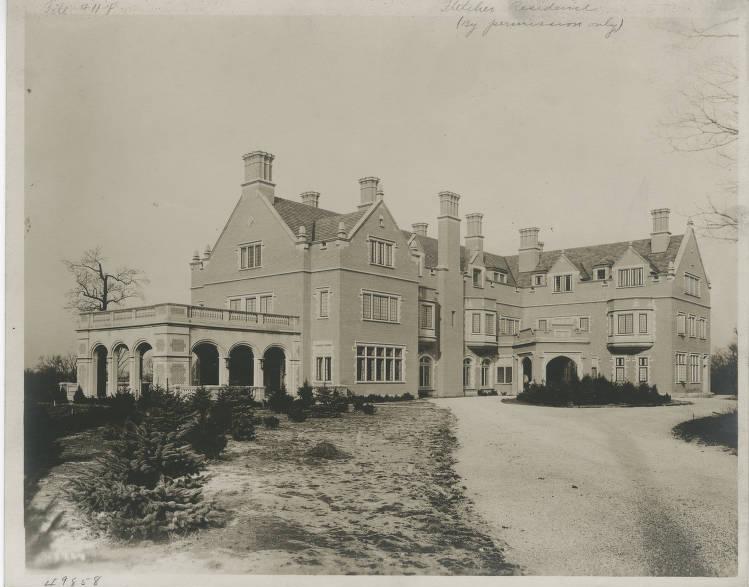
Photo info ...
Credit: Indiana University IndianapolisView Source
(Nov. 24, 1879-Oct. 8, 1957). Grandson of bank founder and a native of Indianapolis, Stoughton A. Fletcher II attended local public schools and graduated from Princeton University.

He became assistant cashier (1898) in the Fletcher National Bank, directed by his father Stoughton J., before becoming vice president and later succeeding his father as president in 1907. On September 3, 1910, the bank merged with American National Bank, and Fletcher became president of the new . In 1912, he was instrumental in merging the Marion Trust Company (1895) and the German American Trust Company (1906) into the Fletcher Savings and Trust Company.
In contrast to his conservative and staid forebears, early Indianapolis attorney and Stoughton Sr., Fletcher had extravagant tastes. In 1916, he built Laurel Hall, which was designed by noted Indianapolis architect, . Situated on 1,500 acres of farm and woodland east of Emerson Avenue, it was named for Stoughton’s mother.
Laurel Hall had 32 bedrooms comprising 38,000 square feet. Construction costs reached $2.1 million (around $48 million equivalent in 2020). It took a staff of 10 to manage the estate. Fletcher also raised horses at Laurel Hall. At this time, he became one of the leading horse breeders in the U.S. and was especially well known for having good sires.
Over the years Fletcher was involved in numerous business transactions, including one which resulted in the loss of his personal fortune. During World War I, he attempted unsuccessfully to corner the sugar market. In 1918, Fletcher also invested in Remy Electric Company and the American Creosoting Company, which he later relinquished, and pledged his personal resources to organize the Midwest Engine Company (a merger of the Hill Pump Company of Anderson and Lyons-Atlas Engine Company of Indianapolis). The armistice, however, resulted in the cancellation of government contracts to manufacture turbine engines, leading to the company’s demise and the forced sale of its assets in July 1922.
On May 19, 1923, Fletcher resigned his position as president of the American Fletcher National Bank “to discharge [his] liability to personal creditors.” He only had $481.39 to his name and owed over $1.7 million. He lost Laurel Hall, having pledged it to finance his industrial operations. Fletcher filed for bankruptcy in 1924.
Following his 1923 resignation from American Fletcher National Bank, Fletcher served as a financial consultant but led a life of relative obscurity, spending the last four years of his life in Saranac Lake, New York. Fletcher is buried in .
The Sisters of Providence purchased Laurel Hall from American Fletcher National Bank in 1925 to found Ladywood, a Catholic, all-girls boarding school. Indianapolis entrepreneur and civic leader purchased Laurel Hall in 1984. He developed the property as Windridge Condominiums, which he built around the original building. The condominium complex used it as its office and entertainment center. Welch sold 34 acres surrounding Laurel Hall to Cathedral High School. Cathedral had been an all-boys school located across the street from downtown. Acquisition of the land allowed Cathedral finally to admit women to the school.
Welch subsequently sold Laurel Hall to the . It served as the Institute’s headquarters from 1986 until it moved to Washington, D.C., in 2004. Phi Kappa Psi Foundation purchased Laurel Hall to use it as its headquarters, events venue, and educational center in 2005.

Help improve this entry
Contribute information, offer corrections, suggest images.
You can also recommend new entries related to this topic.